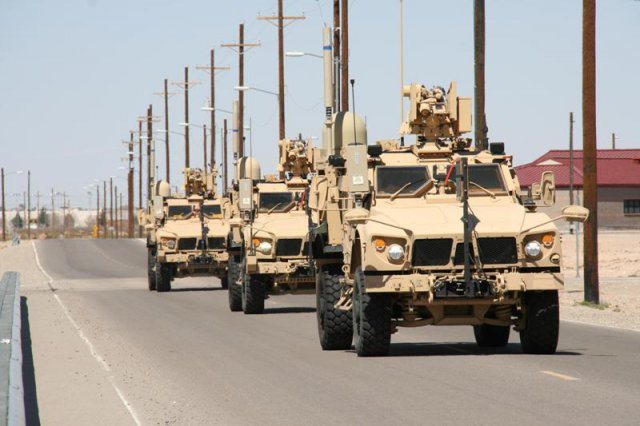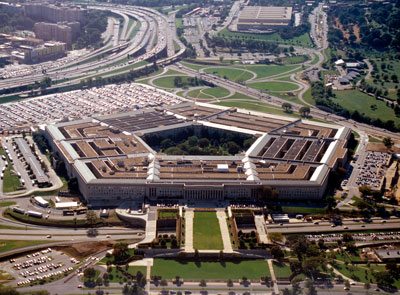“Are we doing the right thing? Do we have the right people involved?” asked the moderator for the Network-Enabled Mission Command panel here, June 19.
“Are we making those hard decisions that need to be made? Are we being flexible as we address these issues?” asked retired Brig. Gen. Frank Akers, Army Science Board, to set the stage for the panel at the at the Association of the United States Army, known as AUSA, Mission Command Symposium.
To operationalize Mission Command, the Army is investing in the network to be the core to a smaller, more capable, and better trained expeditionary Army. The foundation of the modernized network is a joint, secure, and common architecture that will provide information to enable leaders, units, and the Army to operate more effectively.
Lt. Gen. Susan S. Lawrence, U.S. Army chief information officer/G-6, asked, “How do we modernize the network and balance operational risk across competing priorities with increasing fiscal constraints?”
“Everything is network dependent,” she said. “We must train as we fight with little to no notice in any austere environment. [So] we are working hard to get the network right at posts, camps, and stations by building the right installation infrastructure.”
The speed with which industry moves new technology taxes the Army to avoid gaps in how long it takes to acquire and field new systems and products. For example, as industry is already testing 5G environments, the Army is just now testing its first 3G products.
The panel also offered an operational perspective of how the U.S. Army Cyber Command, or ARCYBER, is conducting cyberspace operations to support commanders and leaders executing Mission command. Lt. Gen. Rhett A. Hernandez, ARCYBER commanding general, discussed ARCYBER’s role in integrating cyberspace into planning and exercises to help shape cyber education, training, and leader development.
Several panelists described the Army’s Network Integration Evaluation, or NIE, a series of semi-annual field exercises at Fort Bliss, Texas, to evaluate, integrate and mature the Army’s tactical network. The exercises assess network and non-network capabilities to determine implications across the Doctrine, Organization, Training, Materiel, Leadership and Education, Personnel, and Facilities, or DOTMLPF, domain.
Maj. Gen. Genaro J. Dellarocco, commanding general, U.S. Army Test and Evaluation Command, reported that NIE 12.2, the third and most recent NIE iteration, was generally appraised as the best planned and executed NIE to date. He said that future iterations will include more distributed testing, more free play and more involvement with the Joint Force.
The NIEs are all about capability set management and how the Army is fundamentally changing the way it evaluates, acquires, and fields network capabilities to truly enable Mission Command. Brig. Gen. John. B. Morrison Jr., director, LandWarNet/Mission Command, Office of the Deputy Chief of Staff, G-3/5/7, said, “Industry is absolutely a key player in what we are trying to do.”
The Army is also synchronizing the standards-based, integrated network capability sets with the Army Force Generation, or ARFORGEN, cycle timeline.
“We now have the requirements, acquisition, and testing communities in one place looking at network capabilities trying to leverage industry innovation so we can start closing the technology gap and get capabilities into the hands of our Soldiers sooner and faster,” said Morrison. “Since the first NIE began, the Army has saved or avoided more than $6 billion.”
Brig. Gen. Timothy Coffin, deputy commanding general for Operations, U.S. Army Space and Missile Defense Command, talked about that organization’s key role in providing the network to the tactical edge and how space is integrated with other capabilities through the operations process. Space is “congested, contested and competitive,” said Coffin, and it has a growing role in the Army’s operational environment. In doing a quick Google search prior to the panel, he found eight or nine other countries who are involved in developing/jamming satellite communications.
A pilot project by the Defense Advanced Research Projects Agency, known as DARPA, is supporting Mission Command by putting transformative applications, or transapps, in the hands of Soldiers in Afghanistan. Dr. Mari Maeda, deputy director, Defense Sciences Office, DARPA, said, “Today, we have 3-to-4,000 users in an ongoing program in Afghanistan using a secure, robust Android handheld device. We roll out new capabilities every three to four months, from new apps to new server capabilities.”
Retired Maj. Gen. Charles A. Cartwright, vice president, Raytheon Network Centric Systems, highlighted the role of industry in supporting Mission Command system development efforts. He described the power of connecting systems around the world and that much of the capability to make that happen is coming from the commercial world.
“Commercial wireless services like 4G, 5G and even the nation’s broadband systems let Soldiers network with speeds faster than wired Ethernet a few years ago. Technology pushes change from the bottom up. Many of our youngest Soldiers have no memory of a world without computers at their fingertip and an Internet that answers any question,” said Cartwright.











